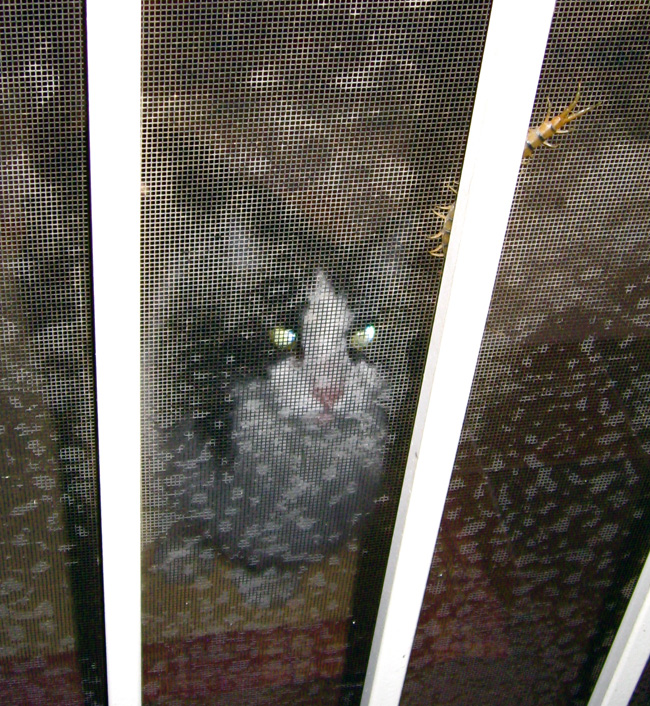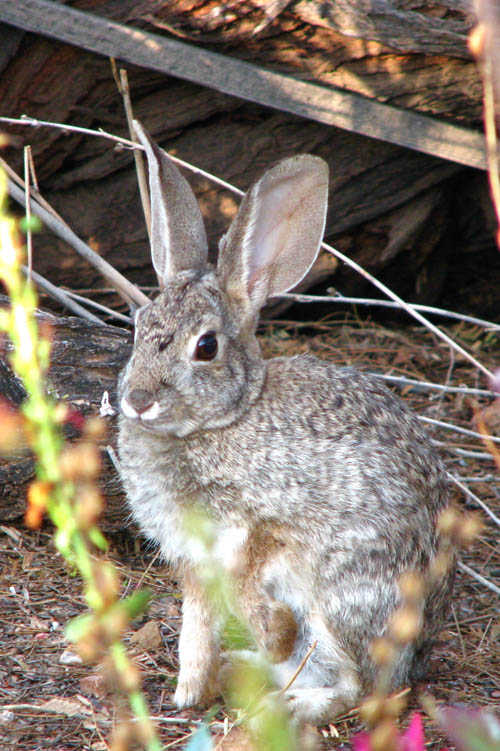Saturday night in our yard, a Couch’s spadefoot emerged after a substantial monsoon event, and used our swimming pool as his stage to advertise his availability to females, and sovereignty to other male spadefoots. (See previous post.)
sovereignty to other male spadefoots. (See previous post.)
<< Spadefoot in the pool net, after exciting dawnzerlylight rescue orchestrated with dramatic Great horned owl background music (photo A.Shock). Look at those eyes — better than dichroic glass!
Swimming pools are not terribly good for wildlife. Wonky chemistry + steep sides = unfriendly locale. At two in the morning, however, I was not able to fish out the wary spadefoot, who fled to the bottom every time I approached with the soft mesh pool skimmer to rescue him. Eventually he swam right to the very deepest depths of the deep end, where even the long-handled skimmer pole could not not reach.
So, I assembled an impromptu spadefoot ramp. Mr. Spadefootdude had been calling consistently from one spot at the edge tiles of the shallow end, so rustling up a four-foot one-by-ten and some bricks, I put the structure there in the hopes he’d return to his  stage after I’d gone away, and climb out if he wished.
stage after I’d gone away, and climb out if he wished.
<< Spadefoot ramp. Like purpose-made cat toy, not used by spadefoot.
Sunday morning, I got up at dawn to check on his progress. After the rain it was cool enough to shut down the AC and open doors and windows, so the Great horned owls duetting from the alley phone pole had awakened me anyway. These were very late hours for them, as the sky was lightening, and the Brown crested flycatchers and Abert’s towhees were already up, brrting and chnking. Sure enough, the spadefoot was still in the pool, strongly kicking along the bottom of the deepest part with its sturdy legs.
By now I was more awake (and more coordinated), so using both the pool brush and the skimmer, I managed to gather the spadefoot gently in the net and lift him up to the surface. He paused for the photo portrait above, then competently took himself off hopping, to find a sheltered hiding spot for the day.
If you are wondering why the word “toad” doesn’t appear in these spadefoot posts, it’s because, toadly as they look, spadefoots are not true toads. On the basis of structural differences, they have been assigned their own family, Pelobatidae, which means spadefoot in Greek. More info here.
basis of structural differences, they have been assigned their own family, Pelobatidae, which means spadefoot in Greek. More info here.
Coincidentally during that very spadefoot night I’d done a smoke firing, and in the bin were two batrachian images, frogs to be sure (prominent tympanum instead of parotoid gland), but still in the ballpark.
<< Here’s one of the whistles, very Couchy. They’ll be offered at Southwest Wings Birding and Nature Festival in Sierra Vista next week (object and photo A.Shock).
I hope the spadefoot doesn’t make a return appearance on his watery stage tonight; I might not hear him again, if the windows are closed. I guess that toadramp will be staying in place a little longer. “wraaaaaaah”
 Last big monsoon event brought rain and a spadefoot to our Phoenix area yard. Tuesday night’s big monsoon event brought even more rain and a centipede.
Last big monsoon event brought rain and a spadefoot to our Phoenix area yard. Tuesday night’s big monsoon event brought even more rain and a centipede.
















